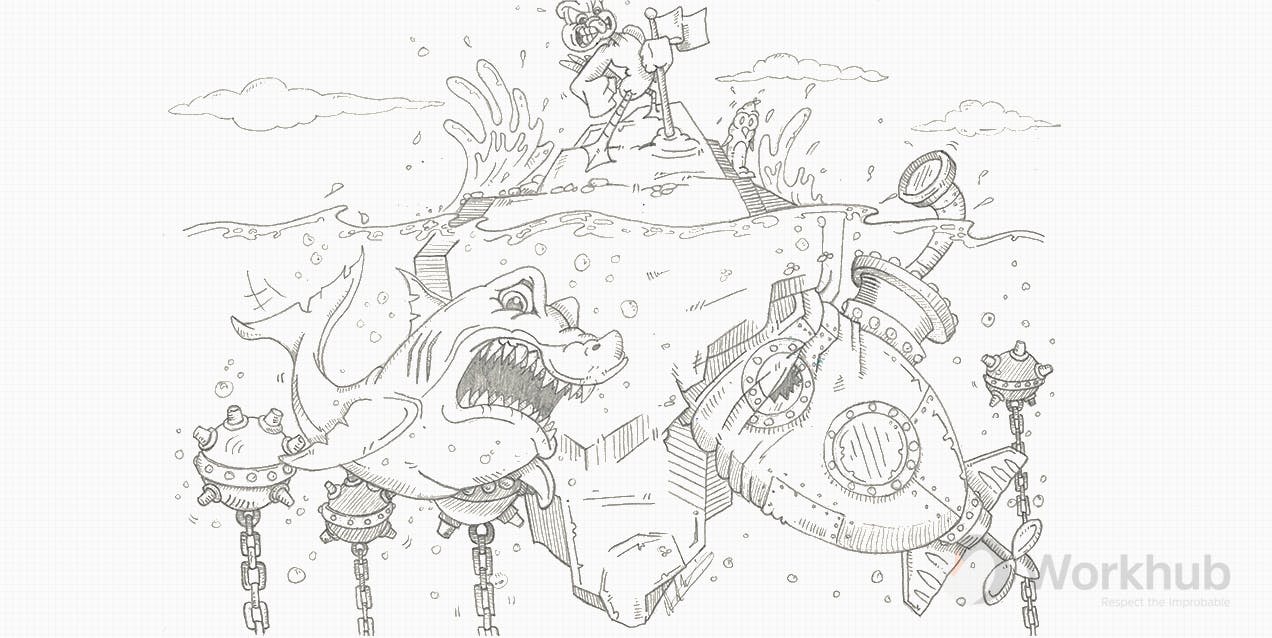
Today we take a deeper look at the true costs of workplace injuries. These costs aren’t just defined by direct costs; therefore, we must look deeper into the auxiliary effects and how those might impact production, quality, morale and ultimately the bottom line.
Types of Costs
There are essentially 2 types of costs associated with workplace injuries: Direct costs and indirect costs
Direct Costs
Direct costs are the most commonly evaluated and understood, as they are easily measured by the worker’s compensation claim through the insurance company. These costs can range significantly but the average is around $40,000 according to NSC Workers Compensation Costs.
Indirect Costs
Indirect costs are less obvious but just as important and generally more costly. We’ve compiled a short list of examples here; however, the costs do vary based on the company so it’s always good to do your own assessment. One of the best ways to assess this is to draw a story board or flow chart of what happens when an injury occurs. Do operations shut down? How many other workers are affected? What are the next steps after injury? Not only are these essential policies and procedures for your organization but they also help to assess these indirect costs.
Examples of Indirect Costs:
- Fines and legal actions – expense of fines, attorneys and the associated administrative time
- Lost production – reduced productivity, operations shut down, hiring temp workers
- Wages during work stoppage – the time needed to assess worker and equipment conditions, coworkers, internal first responders
- Administrative time – HR, supervisors, safety managers’ time to complete documentation and investigative reporting
- Increase in premiums – higher workers compensation fees
These costs are expansive and can be difficult to measure. Thankfully for us, many researchers have observed this issue and identified methods for evaluating indirect costs. One study conducted by researchers from the Liberty Mutual Research Institute for Safety, Harvard University and University of Wisconsin-Oshkosh found that for every dollar spent on direct costs, about $2.12 would be spent on indirect costs. This study also found that, on average, every dollar spent on improving workplace safety returned $4.41. Now that’s an ROI we can get behind.
Another study focused on the construction industry found the ratio between indirect and direct costs to be 4:1 and in some cases as high as 17:1. Certainly these ratios vary depending on the scope and magnitude of the incident, but in any case, the indirect costs far outweigh the direct costs.
The Bottom Line
Based on those studies, a conservative calculation would be 2:1.
Indirect = Direct x 2
Based on the average of $40,000 that would bring the cost to:
Total Cost = $120,000 = $40,000 x $80,000
This number may not seem like a lot but if your company is operating at 10% profit, then you would essentially need $1.2 million in additional sales just to pay for the one injury.
With all this said, it’s not just about financial costs but other factors, including the health and the overall morale of the company which are at stake.
Avoiding these incidents to begin with is always the best goal. You can use Workhub to build and manage safe operating procedures , highlight hazards using safety meetings, inspect your equipment regularly and much more to reduce the likelihood of these injuries. In the event of an injury you can also leverage good safety management software like Workhub to keep the indirect costs at a minimum.
Still have questions?
Let our knowledgeable sales team give you a full product tour and answer any specific questions you may have.
Workhub Internal